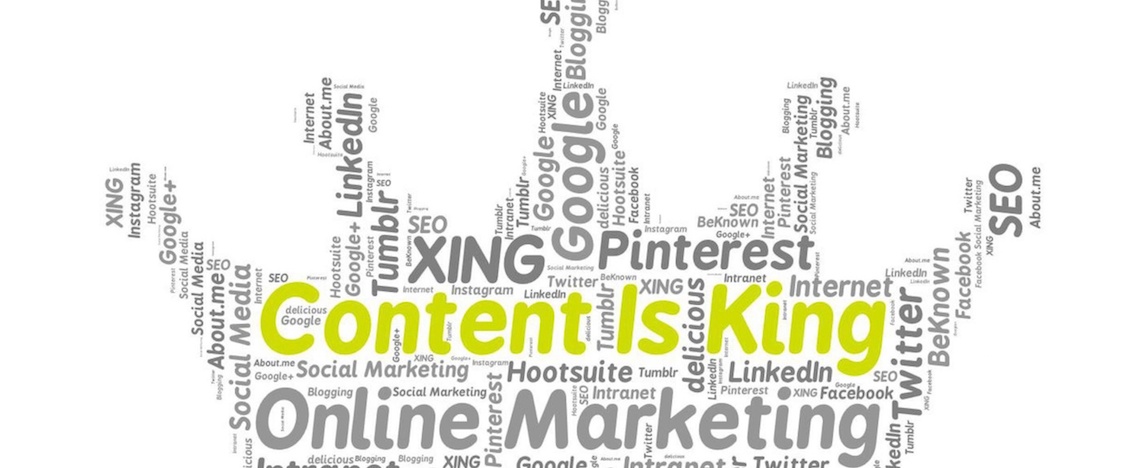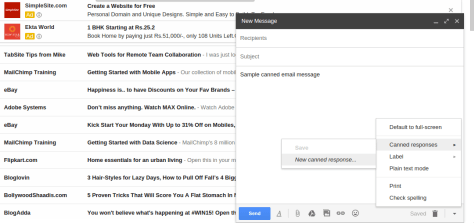
So, you have decided to launch your own digital advertising strategy. What's next? This article will guide you through each step of the process from selecting your channel to researching your audience. This article will also show you how to create a customer journey and split test your strategy. This will allow you to see if your new strategy works for your brand. If it doesn't work, don't worry. There are many other businesses who have had the same question: "How do I start a digital marketing strategy?"
Researching your audience
To create a digital marketing strategy, you need to research your audience. You can do this through quantitative research, which involves surveying a large population and generating statistical results. To create an email marketing campaign targeted at a specific audience, it is important to understand their needs and interests. To determine their purchasing habits, you can also examine their purchase history. Then you can target your marketing messages to the targeted audience segments.
To create a successful digital marketing strategy, you need to understand your audience well. Without thorough research, it's impossible to understand your audience's needs and wants. Research can help you to identify these issues and create personalized content for them. You can also predict their needs, which will help you become more efficient in your marketing. Here are some suggestions for researching your audience.
Interviews: Conducting surveys can help you understand your audience better. Emailing existing customers is a great way to get feedback from them and conducting interviews. These surveys will give you valuable information on what makes your audience tick. You can then create your digital marketing strategy. It's important to research your audience, but it is equally essential to create a compelling campaign. This will help you engage your audience, and increase sales.
Segmentation: You can tailor your message to your audience by understanding their preferences, interests, lifestyle. Segmentation can help you communicate with your audience in a stronger way and build a relationship with them. For example, Adidas sent a gender-specific email, while the clothing brand categorized its audience by gender. Customers buy jeans in large numbers, so a survey asking them how they rate the retailer would result in an average rating of 8/10.
Choose the right channels
The key to promoting your product/service is choosing the right digital marketing channels. Your objectives, competition, budget, as well as your primary objectives should be considered when choosing a digital marketing channel. Different channels can produce different results so make sure you choose the right channel for you. Depending on the channel you choose, what content you share with your audience will determine which format you use for your ads. Content marketing is still the king and most relevant form of marketing. But if you want reach your audience, you need to use this technology.

The goals of the business will dictate which channel you choose to use. Determine your long-term and short-term goals. One long-term goal is to increase revenue 20 percent over the next two year. Another short-term goal is to generate 400 qualified leads in six months and increase website traffic by 70% within eight months. You will be able to determine which channels work best for you if you identify your short-term and longer-term goals.
Before you choose which channels to use, be sure to assess their effectiveness. Each channel has unique strengths and weaknesses. Consider the cost of each channel's creative content and what type you will need. Be sure to allocate all the budget you have before you consider using other channels for your digital marketing strategy. If you want to create a buzz-generating campaign, you should use Facebook or Twitter.
Designing a customer journey
Customer journey maps are an important part of a digital marketing strategy. These maps outline the customer's journey from decision to action. The customer experience map can be used in many ways. It can show the customer's journey through the sales funnel, up to the point where they become a loyal customer. The customer journey map can also help identify where improvements can be made.
A customer journey map, in a nutshell is the prospect's journey towards purchase. It helps marketers map out the questions they ask and the pain points they experience along the way. The higher-funnel stages aim to create awareness and interest while the final stages focus on fostering brand loyalty. The first step in this process is to create awareness. This can be achieved through word of mouth, social media, search engine suggestions and blogs.
After researching and learning about a brand, potential customers begin the information-gathering phase of the customer journey. They may not be familiar with you at first, but they have an idea of what they want. Customers should be able to make an informed decision during this phase. Additionally, customers can get a free trial period from brands to overcome any last hurdles during their buying journey.
By understanding the customer journey map, marketers can target their advertising efforts. Each stage should have its own buyer persona. Marketers can tailor their marketing campaigns according to the goals of each stage by identifying these. A customer journey map can also help marketers better understand their target audience by identifying what motivates each stage of the customer's decision-making process.
Split testing your strategy
Split testing in various areas of your digital strategy can make your business more profitable. These include page copy, headlines as well button text, images, social buttons, email marketing and call to action. Here are some examples of scenarios you can test. Split testing is useful to determine which marketing tactics will result in increased sales and profit. You must use the right size sample. Split testing should always be done with the appropriate confidence rating.
Split testing can help you determine if certain marketing strategies are working or not, and where to make changes to maximize their effectiveness. Split testing can also help you determine if your online marketing strategy is producing leads and generating returns. Split testing can be used to experiment with different versions of a site or particular elements. You can use the split test results to determine if your website makes money. Once you have identified which variations generate more leads you can make changes in your digital advertising strategy.

ClickFunnels offers a library that allows you 6 different versions to test one advertisement. It can help you get ideas for split testing. Facebook is another excellent place to get split-test ideas. You can find many examples of Facebook ads and copy them to see which ones perform better. Landing pages are also ideal locations to test split tests. Split-testing can also be done on landing pages. Moving the CTA down from the fold increased conversions 30% while removing the CTA from the landing page led to cart abandonment rates dropping by 33%.
Split testing is an integral part of conversion optimization. Split testing is the process of dividing traffic into the control and variant groups. Split testing lets you show half the variant version to 50% of your traffic. Multivariate tests allow you to divide traffic into equal segments, and then show one variant to each segment. Split testing can improve your digital marketing strategy, and you'll be amazed at the results!
Measuring its success
The first step to establishing a digital marketing strategy that works is measuring its success. You can do this through a number of ways, including monitoring the number of visitors who have converted into buyers. You can also use other metrics to assess the effectiveness of a campaign such as page views. These metrics can help you determine the success or failure of a campaign depending on your target audience and to evaluate the effectiveness of an individual marketing initiative.
In order to measure the success of a digital strategy, it is important to monitor key performance indicators (KPIs), in order for you evaluate the effectiveness of your campaigns. KPIs can be quantifiable metrics that measure how your marketing team does against a particular goal. These targets may be high-level, or low-level. These KPIs are helpful in identifying campaign success.
It is important to set clear objectives for measuring the success of your digital marketing strategy. Consider, for example, how many visits did your website get? What content did your website encourage? Are your email marketing campaigns generating more business? Are you getting new business? What proportion of your visitors bought after you sent an email? These are just two examples of what you must track to ensure your digital marketing strategy succeeds. It will ultimately all come down to your goals and objectives as well your digital marketing strategy.
FAQ
What is a PPC Ad?
Pay-per Click ads are text-based advertisements which appear at the top of a page.
These advertisements are extremely targeted, meaning advertisers only pay when someone clicks on them.
PPC advertising works very similarly to Pay Per Call advertising. This will be discussed later.
Link Building: Can I Increase My Rankings?
Link building is the process of creating high-quality backlinks to your website. It's important to ensure that websites linking to yours are relevant for your business. The more authoritative and unique the link is, the better.
Are Backlink Services Worth It?
Backlinks are paid advertising tools that allow companies and individuals to buy links to their sites. These links will be placed by other websites who wish to send people to their site. They can be purchased using either cash or a credit card.
How can I create a SEO strategy?
It is important to understand your goals and the best way to reach them. This allows you to structure your content around these goals.
The second step is to begin working with keywords. By doing keyword research, you'll gain insight into what people are searching for when they use certain words. You can then write articles about those topics by using this information.
After writing your articles ensure that you include your target keywords in them. You should also optimize each article by including relevant images and videos. If possible, you should also link to other related sites.
Once you've finished writing all the content for your site, it's time to start optimizing that content!
How much does SEO cost?
SEO is long-term investments so you won’t see immediate results. It is important to remember, however, that SEO is a long-term investment. The more people who find your site, then the higher it ranks in search engines.
There are many factors that influence the price of each service. These include keyword competitiveness and location.
What is an SEO Campaign and How Does It Work?
A SEO campaign is a collection of activities that are designed to increase the visibility of a specific webpage or domain name on search engines such as Google, Bing and Yahoo. These activities include optimising the title tags and meta description tags, URL structure pages, images, internal links, and page content.
SEO campaigns usually begin with keyword research. This is where keywords are identified that will increase organic traffic. Once keywords have been identified, they must be optimized throughout the entire website, from the homepage to individual pages.
What are the top tools for on-page SEO?
Video embeds as well as image alt tags, structured markup and internal linking are some of the best tools to use for on-page search engine optimization. These issues can be found in this article.
Statistics
- Deleting those 10k pages is one of the main reasons that he improved his site's organic traffic by nearly 90%: (backlinko.com)
- And 90%+ of these backlinks cite a specific stat from my post: (backlinko.com)
- If two people in 10 clicks go to your site as a result, that is a 20% CTR. (semrush.com)
- 93%of online experiences today begin on search engines. (marketinginsidergroup.com)
- Sean isn't alone… Blogger James Pearson recently axed hundreds of blog posts from his site… and his organic traffic increased by 30%: (backlinko.com)
External Links
How To
How do I set up my first blog?
It's simple! WordPress is an excellent platform for creating a blog. WordPress allows users to easily modify the look of their blogs, including adding themes, changing colors and customizing the layout. They can also add plugins which allow them to alter certain aspects of their site based upon visitor activity.
Many free templates are available to download from wordpress.org and premium templates that cost money. Premium templates include extra pages, plugins, advanced security, and more.
Once you have downloaded your template, sign up for a free account at a hosting provider in order to upload your files and to run your blog. Many hosting companies offer free accounts. However there are limitations to how much space you can have, how many domains your site can host, and how often you can send emails.
If you wish to use more than one domain, you will need to purchase additional email addresses. For this service, some hosts charge a monthly cost.
It's easy to wonder why someone would pay to host a blog online, especially if you're just starting out with blogging. Hosting companies offer unlimited storage, so your files won’t be deleted even though you delete them accidentally.
Hosting providers often allow multiple domain hosting, so you can have many sites from the same package. It is possible to avoid multiple email accounts by registering for one interface, allowing you to manage all of your sites from the same place.
Some hosts include social media sharing buttons on their dashboards, allowing visitors to share posts across the internet quickly and easily.
You can usually manage your blog through the tools offered by hosting providers. You can check the performance stats for your site, view how many visitors each article has received, and even compare your traffic to other blogs.
These tools will make managing your blog much easier and more efficient. It's worth looking at before you decide on a hosting plan.
To sum up:
-
Choose a topic pertinent to your business.
-
Create engaging content;
-
Optimize your site using SEO techniques;
-
Promote your site using social media channels;
-
Regularly review your statistics in order to make changes if needed.
-
Keep your blog updated regularly, last but not least.
In short, create good content, promote it effectively, and track its success.